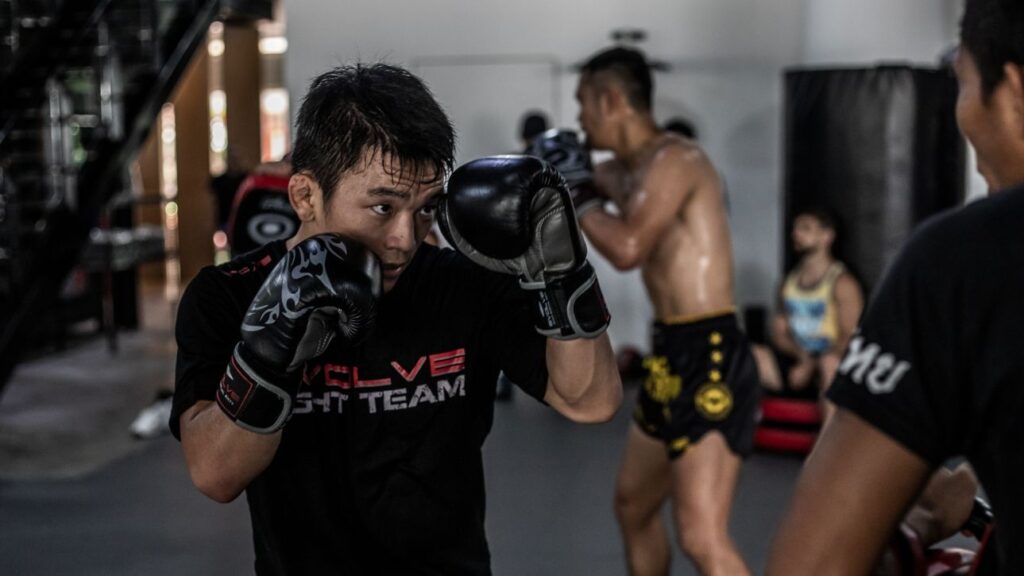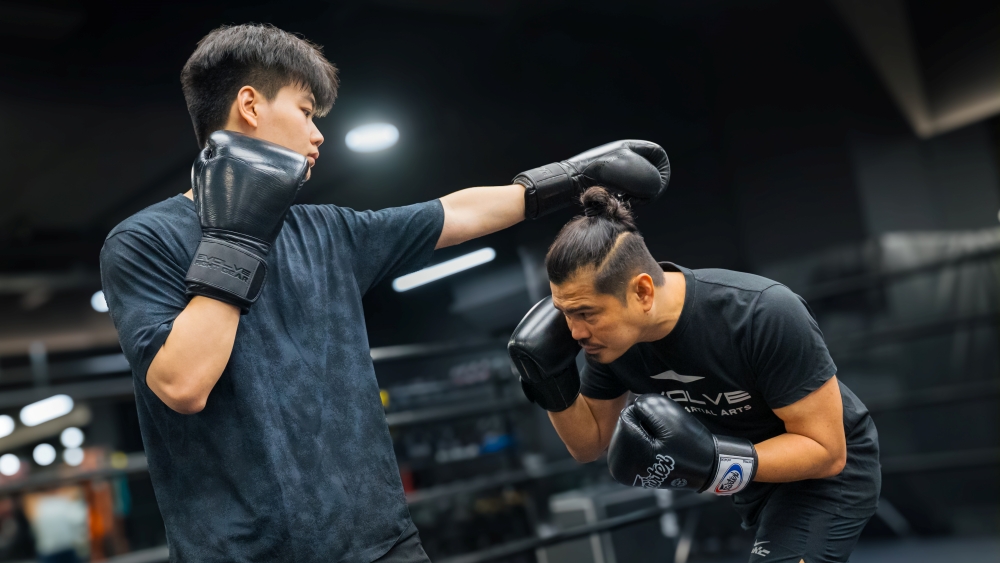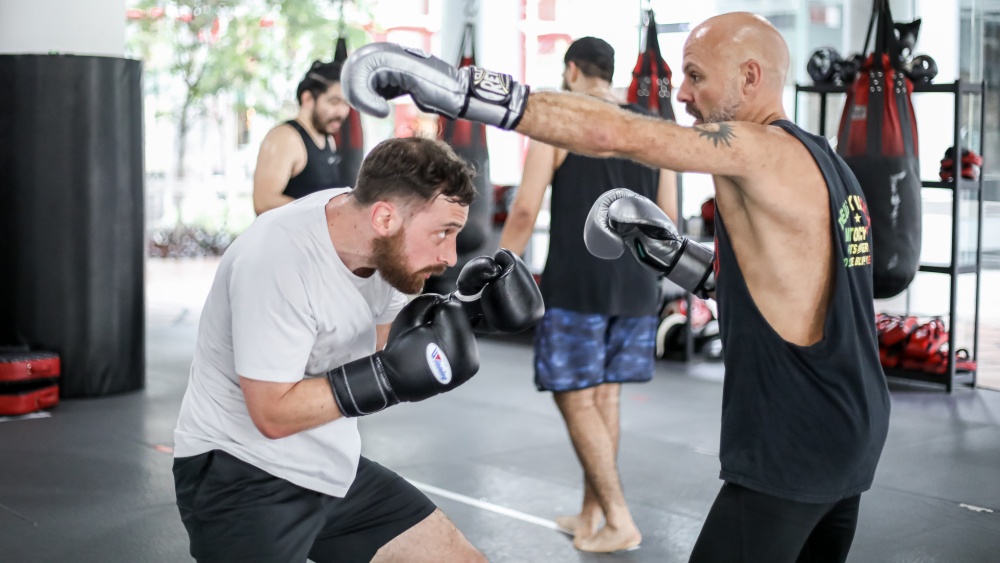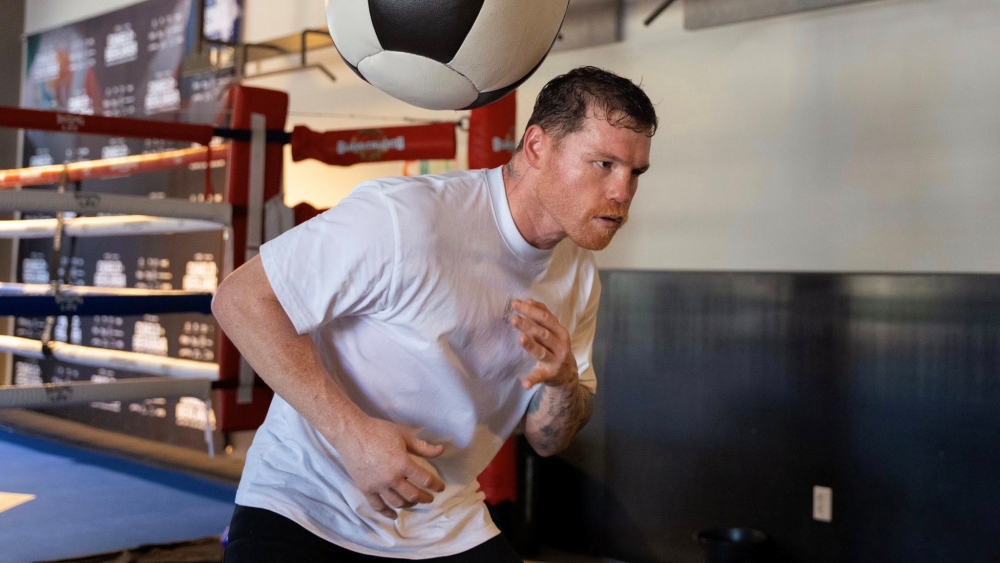If you have ever spent time in a boxing gym, you would have heard many times that defense is just as important as offense. Some may argue that, just like in all sports, defense wins championships. It is then extremely critical, in the ring, that you learn to protect yourself by employing a good defense.
Keep your hands up, you are always told by every boxing coach alive. Keeping your hands up protects you from getting countered, keeps you ready to block any incoming punches, and gives you relative safety from getting hit clean. Always remember that your defensive guard is your foundation for good defense in boxing. The most basic defensive guard involves keeping both hands by your face. Your rear hand should be by your chin, while your lead hand should be slightly in front of your face.
This puts you in a good position to throw punches while making it easy to block punches. You can also throw counter punches from the basic defensive stance, even though outer guards like the Philly shell give you more options.
The key to making the basic guard effective is keeping your hands where they should be. You can’t block with your forearms when your hands are down by your waist.
How To Make Keeping Your Hands Up Part Of Your Muscle Memory
However, more often than not, many beginners or even experienced boxers tend to forget this very basic skill. A lot of boxers focus too much on offense and forget to cover up. As a result, they get tagged with sharp counters and are often left wide open.
On the other hand, some of these boxers struggle with remembering how to keep their hands up when sparring or competing because haven’t been properly taught how to position their hands, while others simply don’t have enough experience forcing themselves to keep their hands up as they navigate around a boxing ring.
It’s also natural to drop your hands as fatigue seeps in, making it harder for boxers to keep their hands up. Even professional boxers at the highest levels drop their hands when exhausted.
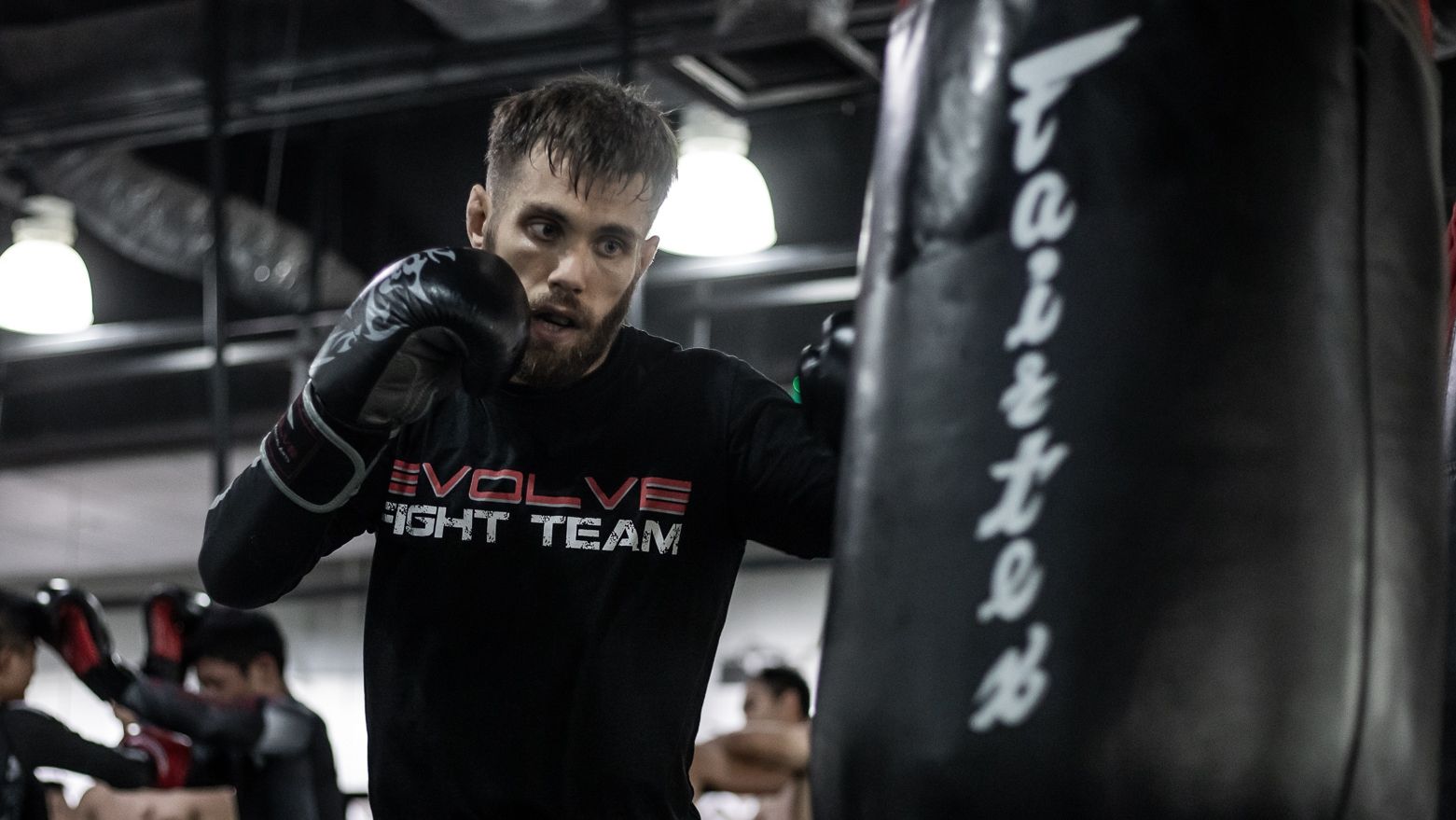
Building a habit of keeping the hands up on defense is important to your success. Embedding this into your muscle memory is an essential part of your defensive repertoire. Let’s take a look at a few things you should be considering when playing on the defensive, especially in keeping your hands up.
Today, Evolve Daily shares ten tips and drills on how to keep your hands up in boxing and maintain great defense.
1) Be Mentally Aware
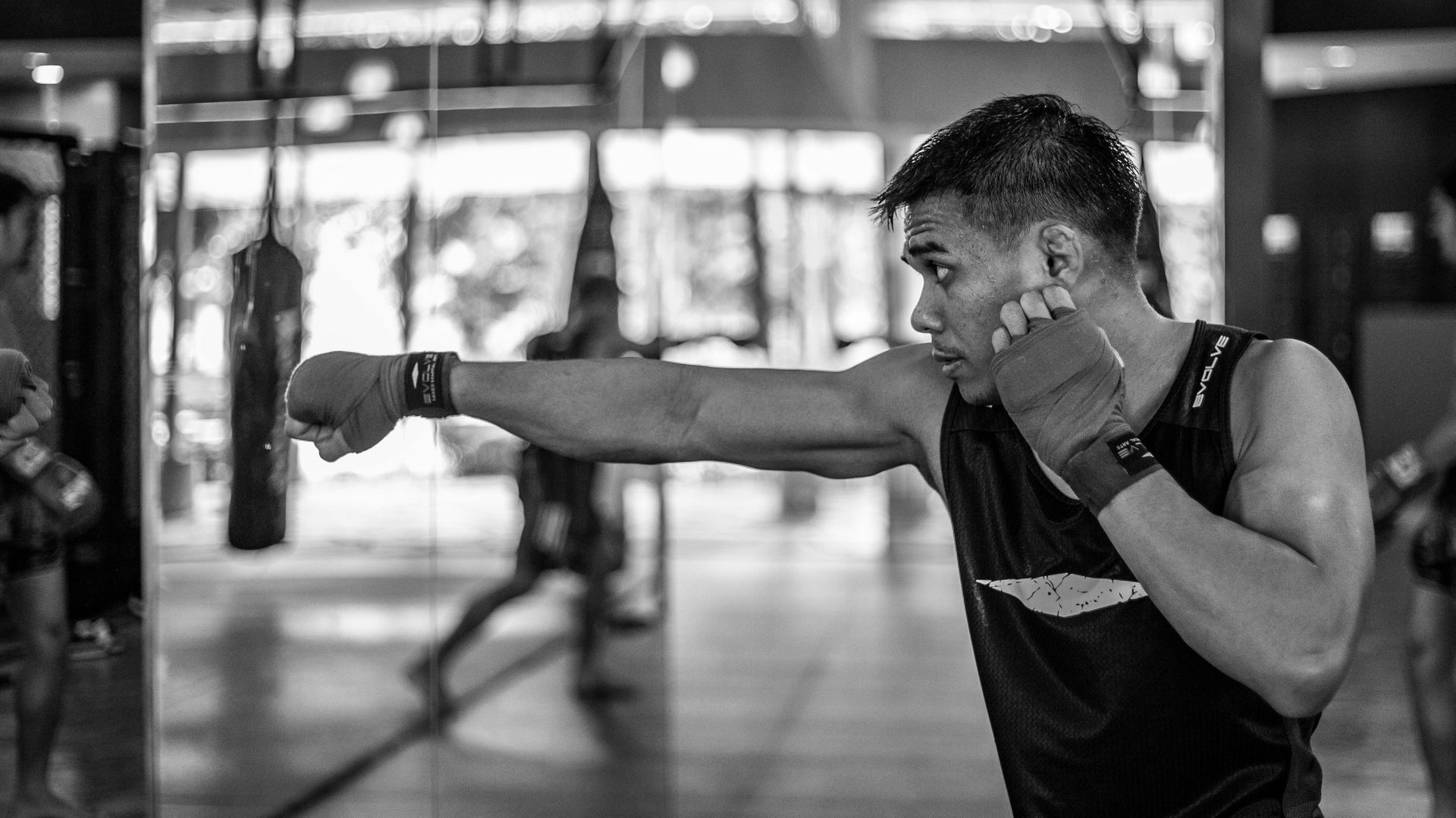
Perhaps the most important thing about defense is to be in a constant state of mental awareness. If you’re laser-focused and self-aware on defense, you can rely on your reflexes and depend on your defensive skills more to keep you protected. Mental awareness is a prerequisite to employing a good defense and keeping your hands up.
One way to be mentally aware is to keep a clear head. You can practice this by spending time honing your breathing techniques, performing yoga exercises, or even through meditation. Boxing is as much a mental game as it is a physical one, so it’s important that you exercise your mind as much as your body.
By being defensive-minded in the ring, you reduce the risk of leaving yourself vulnerable to your opponent’s offense. It’s worth taking note, however, that it is counterintuitive to suggest being overly-defensive. A good balance between offense and defense should be the target.
“Protect yourself at all times,” is what they often say in boxing and getting this right is the first step to a good, sound defense.
2) Practice Recoiling After Offense
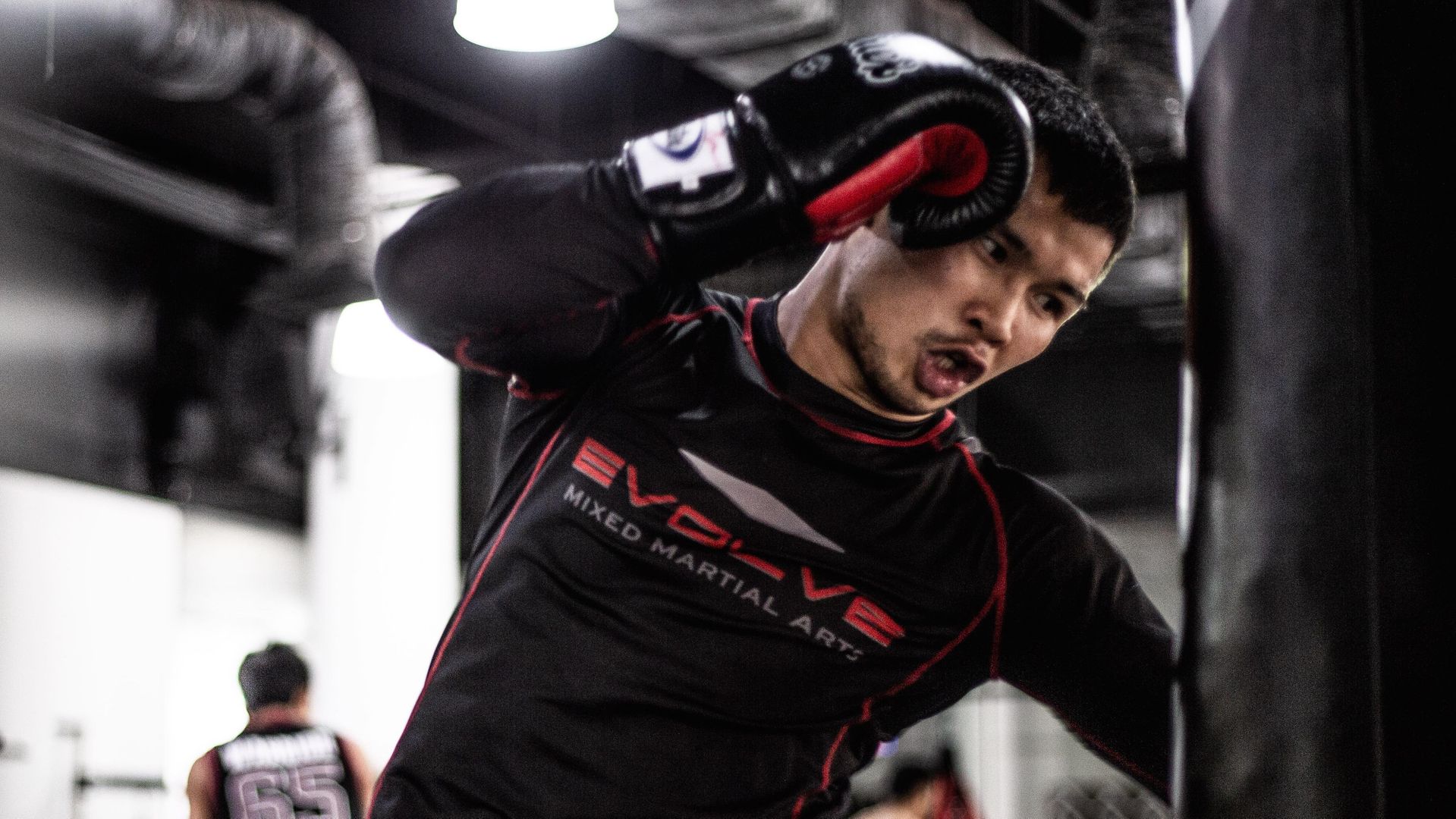
Like every good basketball player, you must always get right back on defense after unloading your offense. In boxing, this is done by recoiling your punching hand back in position in your glove guard as soon as you are done punching.
After unleashing a power punch, there is a split second where you are vulnerable to a counter. Recoiling your hand instantly to get back on defense is very important. The faster you can retract your punching hand back into position, the better your defense will be when your opponent retaliates.
The Science Of Body Punching In Boxing: Tips And Techniques https://t.co/LUSHMQP8Ag #EvolveMMA #Boxing pic.twitter.com/6ge5KjfJ9g
— Evolve MMA (@EvolveMMA) June 27, 2019
A snapping punch effect is something you can practice and could prove to be very useful. The idea is to throw your punches with speed and power, but add a snap to the end of each punch and use that momentum to get back on defense. These types of punches aren’t as powerful as when you punch through the target, but they are powerful enough and provide a great defensive bonus as well.
3) Maintain A Line Of Sight, Even Through The Glove Guard
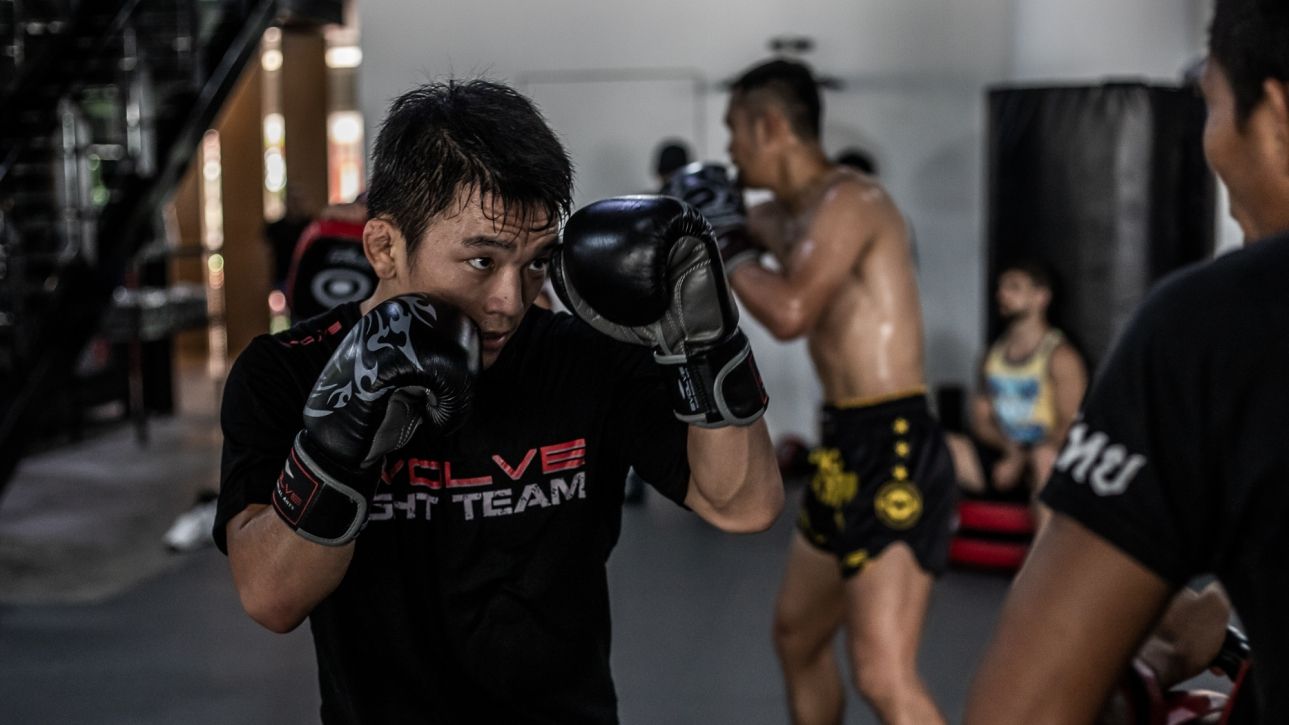
Maintaining a line of sight through the glove guard is very important. Oftentimes, beginners make the mistake of keeping the glove guard too high, or impairing their vision. This leaves them open to getting countered and gives their opponents a pathway to land clean shots. Whether that’s right through the center, splitting the glove guard, or around the sides.
By maintaining a line of sight, you can focus on what your opponent is doing without compromising your defense. Furthermore, you can better anticipate what your opponent is going to throw next. A line of sight is so important on defense.
At the same time, it is your goal on offense to break the line of sight and attack your opponent from angles. This leaves them vulnerable to getting hit by a power punch they will never see coming.
4) Use Your Forearms And Elbows
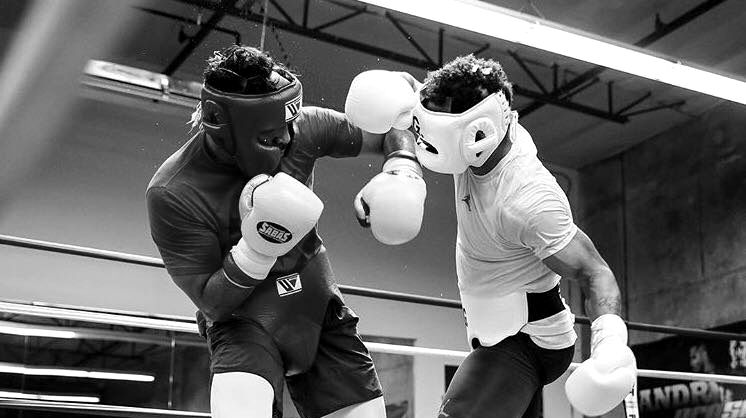
Make use of all your tools. The gloves and hands are essential tools on defense, but so are your forearms and elbows. The great defensive fighters know how to utilize every tool they have in their defensive repertoire.
For example, Ghanian champion Joshua Clottey makes perfect use of his forearms and elbows and is one of the toughest men to hit in the history of the sport.
Why Mid-Fight Adjustments Are Important In Boxing https://t.co/kLquyTfD7E #EvolveMMA #Boxing pic.twitter.com/Ok4snV7Z35
— Evolve MMA (@EvolveMMA) March 11, 2019
At the same time, welterweight legend Floyd Mayweather Jr. was a master in using his broad and bulky shoulders in his Philly Shell defense. Using the insanely popular shoulder roll, Mayweather could parry and pick off his opponents’ shots without ever using his hands and instead using every inch of his upper torso. It’s what made him such a defensive genius.
Strive to use your body like the best defensive boxers in history. Diversify your defensive techniques just as much as your offense. Most importantly, keep your hands up!
5) Block And Parry
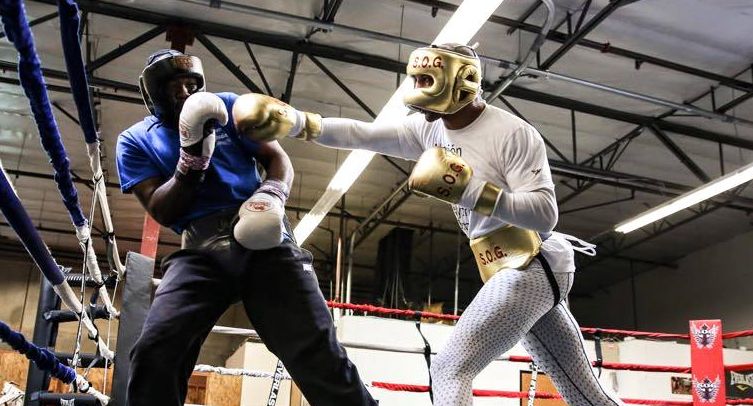
Last but certainly not least, don’t forget the basic defensive techniques such as blocking and parrying.
As much as having good reflexes is important, blocking punches should still be your number one priority on defense. It’s the first defensive maneuver you learn and master and should be a common tool well-utilized in your overall skill set.
In addition, and a little more advanced than plain blocking is the ability to parry. Parrying is so important because it sets up counter opportunities for you. When you successfully parry an opponent’s shot, he is left vulnerable for as much as a whole second — which is just enough of a small window of opportunity for you to capitalize.
Learn how to parry properly, and you’ll be surprised at the number of openings you can create which will lead to devastating power shots.
Drilling Is Key
The best way to make keeping your hands in the ideal defensive position when boxing is to drill it to the point it becomes something you don’t have to think about. Here are some drills that will help you to make keeping your hands up part of your subconscious:
1) Phone And Microphone Drill
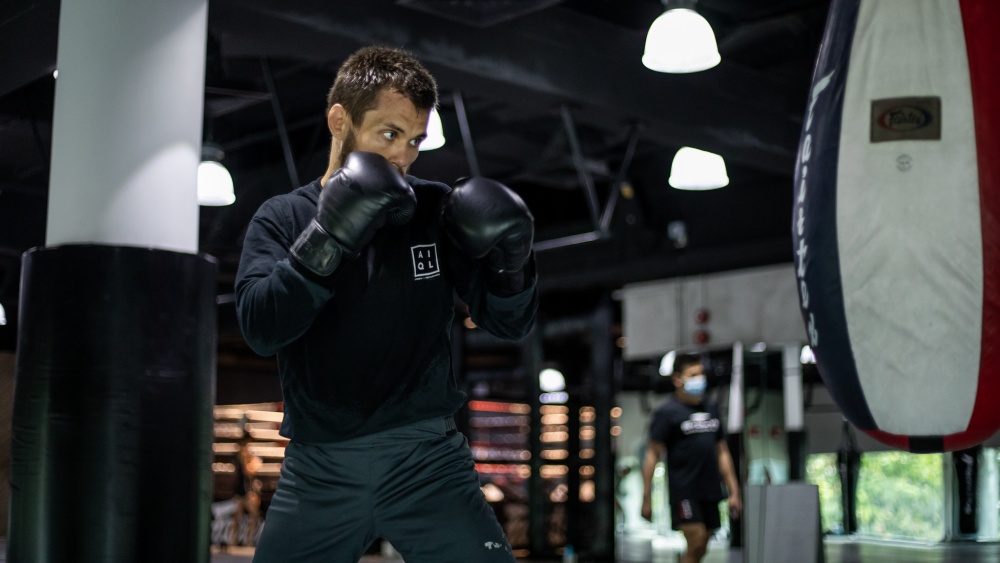
Like watching old classic movies? You’ve probably noticed how telephones worked back then. One hand holds the earpiece on your ear, while the other hands hold the microphone. That’s the position your hands should be in your defensive guard.
Your lead hand should be by your ear as if you were talking on a smartphone. Your rear hand should be by your chin as if you’re holding a microphone. This puts you in a position to block a wide variety of punches. For example, you simply bring your hands together to block straight punches.
To perform the drill, get into your boxing stance and work on your punches, bringing your hands back to the phone and microphone position after each strike. This teaches you to keep your hands in the proper position after each punch, making it harder for opponents to land clean punches on you.
2) The Coin Drill
Here’s an effective way to teach yourself to always keep your rear hand by your jaw. It’s also straightforward. Get into your fighting stance with your rear hand by your chin. Adjust your dominant hand, so it’s right under your jaw. Your knuckles should be lined up with your molars in this position. If possible, get a training partner to place a coin between your rear hand and jaw.
Now, start throwing punches with your lead hand and move around. The key is to mimic the movements you would use while sparring or during a match. Your rear hand is the only part of your body that should be stationary as you work on your technique. Throw jabs, hooks, and uppercuts with your free hand while sidestepping, pivoting, and dancing around with your feet.
The key is not to drop the coin despite all your movement. Doing so keeps your hand rear hand in the optimal position to protect your head and to fire off counters during sparring matches or fights.
3) Shadowboxing
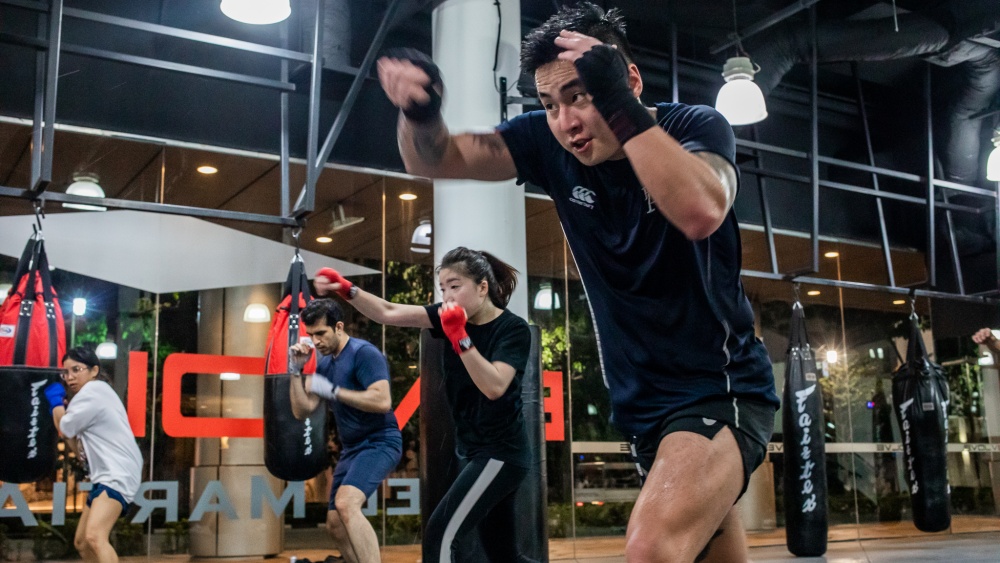
Shadowboxing is one of the most valuable drills for boxers of all levels since it allows them to focus on their movement, flow, and form without an opponent forcing them to push a pace they might not be comfortable with. Shadowboxing is an effective way to practice punches and combinations and your movement inside the ring. It also helps to stimulate how you would block punches in a fight and where your hands should be.
The key to getting the most out of shadowboxing is to make your sessions as realistic as possible. Don’t waste your time goofing around when shadowboxing. Everything should be done realistically, from your combinations to your blocks.
If possible, have a training partner or coach monitor you while shadowboxing so they can give you pointers and let you know when your hands aren’t in the proper positions.
4) Pad Work
Hitting pads is another excellent way to teach yourself to always keep your hands up during your fights. Many trainers will naturally tell you to keep your hands up when you drop them, and some might even give you a little smack on the head for some negative reinforcement.
That works well since an experienced trainer will take advantage of the opening created by your low hand or hands to teach you the lesson. That way, you see firsthand how an opponent can take advantage of the same opening during your matches.
If you’re hitting pads with a training partner, make sure they don’t allow you to drop your hands without repercussions. Pad work involves throwing combinations, evading attacks, and practicing your footwork, and it mimics the motions you would use while sparring, making it an effective way to build positive muscle memory.
5) Speedbag
Speed bags effectively improve many boxing skills such as your hand-eye coordination, speed, and punch accuracy. It also teaches you to keep your hands up since your hands have to be in the proper guard position to work the speed bag. Work on a speed bag long enough, and it will feel unnatural for you to have your hands down when boxing.
Practice Creates Muscle Memory
There are countless drills that can help to teach you to always keep your hands up when boxing. The most important thing is you realize the importance of proper hand positioning and deliberately focus on improving your hand positioning.
Mindlessly performing drills isn’t enough to form good habits. You need to be wholly focused on your movements when performing these drills to get the most out of your training.
If you found this article interesting, here are some others that you may enjoy:
Here’s How To Perfect Your Hook In Boxing
